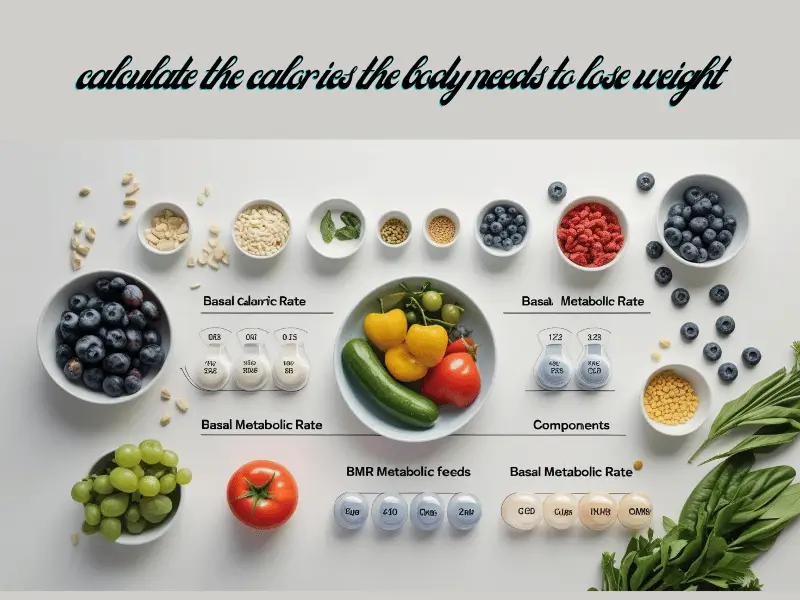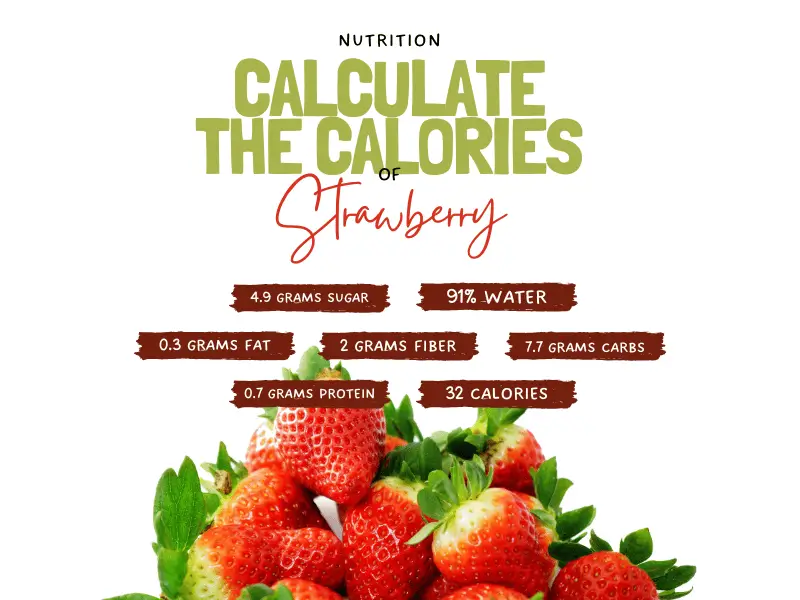Table of Contents
Learning how to calculate the calories the body needs to lose weight is the foundation of any successful weight loss journey. Whether you’re just starting your transformation or struggling to break through a plateau, understanding your unique caloric needs can make the difference between sustainable success and frustrating failure.

In this comprehensive guide, you’ll discover seven proven methods to determine exactly how many calories your body requires for effective weight loss. We’ll explore everything from basic formulas to advanced techniques used by nutritionists and fitness professionals worldwide.
Why Understanding Calorie Calculation Matters for Weight Loss
When it comes to losing weight, the fundamental principle remains unchanged: you must create a caloric deficit. This means consuming fewer calories than your body burns throughout the day. However, knowing how to calculate the calories the body needs to lose weight goes far beyond simple subtraction.
According to Harvard Health Publishing, understanding your individual caloric needs helps you:
- Avoid extreme calorie restriction that can slow metabolism
- Maintain muscle mass during weight loss
- Establish realistic and sustainable eating patterns
- Prevent nutrient deficiencies that often accompany crash diets
The key lies in finding the sweet spot between creating an effective deficit and maintaining your body’s essential functions.
The Science Behind Caloric Needs and Weight Loss
Before diving into specific calculation methods, it’s crucial to understand the components that determine your daily caloric needs:
Basal Metabolic Rate (BMR): This represents the calories your body burns at rest to maintain vital functions like breathing, circulation, and cellular repair. BMR typically accounts for 60-70% of your total daily energy expenditure.
Thermic Effect of Activity (TEA): This includes calories burned during planned exercise and sports activities.
Thermic Effect of Food (TEF): Your body burns approximately 8-10% of consumed calories digesting and processing food.
Non-Exercise Activity Thermogenesis (NEAT): These are calories burned through daily activities like walking, typing, and maintaining posture.

Understanding these components helps you see why how to calculate the calories the body needs to lose weight involves more than just counting food calories.
Method 1: The Harris-Benedict Equation
The Harris-Benedict Equation, developed in 1919 and revised in 1984, remains one of the most widely used methods for calculating BMR. Here’s how to apply this formula:
For Men: BMR = 88.362 + (13.397 × weight in kg) + (4.799 × height in cm) – (5.677 × age in years)
For Women: BMR = 447.593 + (9.247 × weight in kg) + (3.098 × height in cm) – (4.330 × age in years)
Step-by-step example for a 35-year-old woman, 165 cm tall, weighing 70 kg:
- BMR = 447.593 + (9.247 × 70) + (3.098 × 165) – (4.330 × 35)
- BMR = 447.593 + 647.29 + 511.17 – 151.55
- BMR = 1,454.5 calories per day
Next, multiply your BMR by an activity factor:
- Sedentary (little/no exercise): BMR × 1.2
- Lightly active (light exercise 1-3 days/week): BMR × 1.375
- Moderately active (moderate exercise 3-5 days/week): BMR × 1.55
- Very active (hard exercise 6-7 days/week): BMR × 1.725
- Extremely active (very hard exercise, physical job): BMR × 1.9
For our example with moderate activity: 1,454.5 × 1.55 = 2,254 calories for maintenance.
Method 2: The Mifflin-St Jeor Formula
Many nutrition professionals prefer the Mifflin-St Jeor formula because research from the American Journal of Clinical Nutrition shows it’s approximately 5% more accurate than Harris-Benedict for most people.
For Men: BMR = (10 × weight in kg) + (6.25 × height in cm) – (5 × age in years) + 5
For Women: BMR = (10 × weight in kg) + (6.25 × height in cm) – (5 × age in years) – 161
Using the same example (35-year-old woman, 165 cm, 70 kg):
- BMR = (10 × 70) + (6.25 × 165) – (5 × 35) – 161
- BMR = 700 + 1,031.25 – 175 – 161
- BMR = 1,395.25 calories per day
This method typically provides more conservative estimates, which can be beneficial when learning how to calculate the calories the body needs to lose weight.
Method 3: The Katch-McArdle Formula
The Katch-McArdle formula is ideal for individuals who know their body fat percentage, as it considers lean body mass rather than total weight.
Formula: BMR = 370 + (21.6 × lean body mass in kg)
To calculate lean body mass: Lean Body Mass = Total Weight × (100 – Body Fat Percentage) ÷ 100
This method is particularly accurate for athletes and individuals with higher muscle mass, as muscle tissue burns more calories than fat tissue.

Method 4: Simple Multiplication Method
For those seeking a quick estimate, this simplified approach can provide a reasonable starting point:
- Weight loss goal: Multiply current weight (in pounds) by 12-14
- Weight maintenance: Multiply current weight by 15-16
- Weight gain: Multiply current weight by 17-18
While less precise than other methods, this approach offers a practical starting point for beginners learning how to calculate the calories the body needs to lose weight.
Method 5: Online Calculator Tools
Numerous online calculators can simplify the process of determining your caloric needs. Popular options include:
- MyFitnessPal Calculator
- NIDDK Body Weight Planner
- Precision Nutrition Calculator
- IIFYM Calculator
When using online tools, ensure they request comprehensive information including age, gender, height, weight, activity level, and weight loss goals for accurate results. The National Institute of Diabetes and Digestive and Kidney Diseases offers a scientifically-backed body weight planner that’s particularly reliable.
Method 6: Professional Metabolic Testing
For the most accurate assessment, consider professional metabolic testing. Two primary types are available:
Resting Metabolic Rate (RMR) Testing: Uses indirect calorimetry to measure oxygen consumption and carbon dioxide production, providing precise BMR measurements.
DEXA Scan: Determines exact body composition, including bone density, muscle mass, and fat distribution.
While more expensive, professional testing eliminates guesswork when learning how to calculate the calories the body needs to lose weight.
Method 7: Trial and Adjustment Approach
This practical method involves:
- Starting with a calculated estimate using one of the above formulas
- Tracking intake and weight changes for 2-3 weeks
- Adjusting calories based on actual results
- Fine-tuning until you achieve 1-2 pounds of weight loss per week
This approach acknowledges that individual metabolisms vary and provides real-world data for optimization.
Common Mistakes to Avoid When Calculating Calories
Understanding how to calculate the calories the body needs to lose weight involves avoiding these frequent errors:
Overestimating Activity Level: Most people overestimate their daily activity. Choose a lower activity multiplier initially and adjust based on results.
Ignoring Metabolic Adaptation: As you lose weight, your BMR decreases, requiring periodic recalculation of caloric needs.
Creating Excessive Deficits: Deficits larger than 750-1000 calories daily can slow metabolism and promote muscle loss.
Not Accounting for Measurement Errors: Food portions are often underestimated by 20-40%, according to Mayo Clinic nutrition research.
Forgetting About Liquid Calories: Beverages, oils, and condiments can add significant hidden calories.
How to Create an Effective Calorie Deficit
Once you know your maintenance calories, creating a deficit for weight loss becomes straightforward:
Safe Deficit Range: 500-750 calories per day typically results in 1-1.5 pounds of weekly weight loss, as recommended by the Centers for Disease Control and Prevention.
Methods to Create Deficit:
- Reduce food intake by 300-400 calories
- Increase physical activity to burn 200-350 additional calories
- Combine both approaches for balanced results
Quality Matters: Focus on nutrient-dense foods that provide satiety and essential nutrients within your caloric budget.
Monitoring Your Progress and Making Adjustments
Successful weight loss requires ongoing monitoring and adjustments:
Weekly Weigh-ins: Track weight trends rather than daily fluctuations.
Body Measurements: Monitor waist, hip, and other key measurements monthly.
Progress Photos: Visual documentation often reveals changes the scale doesn’t show.
Energy Levels: Persistent fatigue may indicate excessive calorie restriction.
Recalculate Monthly: As weight decreases, recalculate caloric needs to maintain progress.
For additional support, explore our comprehensive meal planning guides and fitness tracking resources to complement your calorie calculations.
Conclusion and Next Steps
Mastering how to calculate the calories the body needs to lose weight empowers you to take control of your weight loss journey scientifically and sustainably. While the methods outlined above provide excellent starting points, remember that successful weight loss involves more than just numbers.
The most effective approach combines accurate calorie calculations with consistent tracking, regular adjustments, and patience with the process. Start with the Mifflin-St Jeor formula for its accuracy, track your results for 2-3 weeks, and adjust as needed based on your progress.
Your weight loss journey is unique, and finding your optimal caloric intake may require some experimentation. Focus on creating a moderate deficit that allows for steady progress while maintaining your energy, mood, and overall well-being.
Ready to put this knowledge into action? Start by calculating your BMR using your preferred method, determine your activity level honestly, and create a moderate calorie deficit. Remember to check our healthy recipe collections for nutritious meal ideas that fit your calculated caloric needs.
Take Action Today: Calculate your daily caloric needs using the methods above, and begin tracking your intake to start your successful weight loss transformation.
Knowing your ideal body weight helps guide your health and fitness journey. Our Ideal Weight Calculator is based on medical research and BMI standards. It helps you understand your weight goals based on:
Best restaurants near me
- Height
- Gender
- Age
- Body frame




